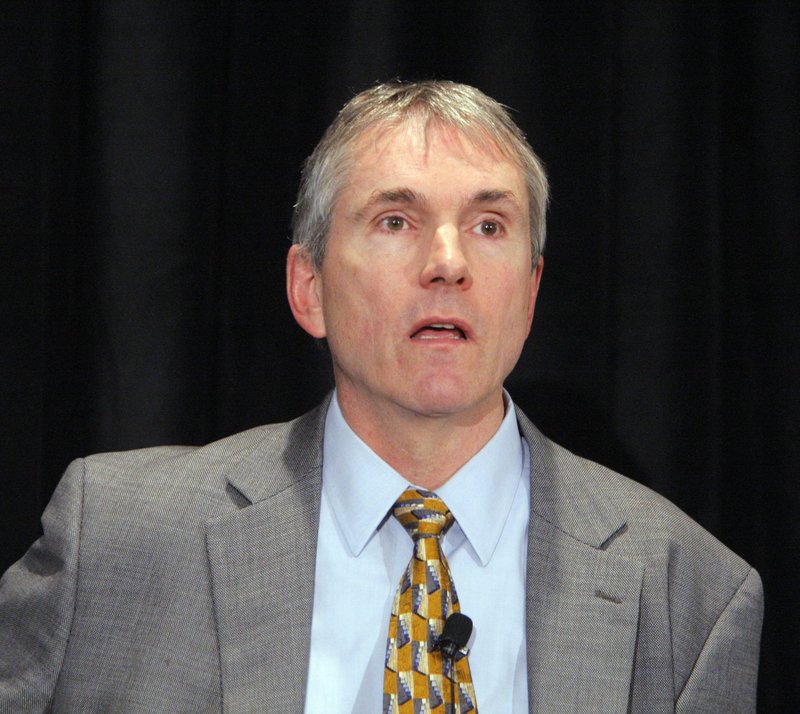“General Electric is paying nothing in taxes right now.” – State Rep. Jon Hinck, D-Portland, at a forum for Democratic U.S. Senate candidates on May 16 in South Portland
Add Jon Hinck, a Democrat in the primary race for U.S. Sen. Olympia Snowe’s seat, to the list of politicians repeating this statement from a high-profile New York Times article on General Electric’s tax strategy.
“Groups on the right and the left have latched on to misleading facts to push their own agendas,” wrote Andrew Williams, a GE spokesman, in an email to MaineToday Media. “But it is important for everyone to start with the facts: GE paid taxes.”
True, but categorizing those taxes is a complicated task because of a convoluted history of company statements, political spin and lack of transparency. GE doesn’t have to release any information about federal income taxes it pays. The best Truth Test on this would require an entire book.
“In fact, GE paid $1 billion in federal, state and local taxes in the U.S. for 2010,” Williams wrote. “GE’s tax rate for 2010 was low because we lost $32 billion in our financial business during the global financial crisis. … That tax rate increased to 29% in 2011 as our financial business has recovered.”
The New York Times piece, part of a Pulitzer Prize-winning series, said GE reported worldwide profits of $14.2 billion in 2010, $5.1 billion of which came from U.S. operations. Then, the piece said, GE claimed the government owed it a $3.2 billion tax benefit. GE denied that repeatedly. It said the benefit claimed in earlier financial statements wasn’t a refund.
In April 2011, Fortune and ProPublica said the $3.2 billion was one of the “so-called financial reporting numbers, used to calculate the profits a company reports to shareholders.” Ultimately, according to the piece: “Yes, (GE) paid estimated taxes for 2010, and also made payments for previous years.”
Complicating matters, Citizens for Tax Justice, a left-leaning think tank, released a report in April saying GE paid an effective net income tax rate of minus-18.9 percent from 2008 to 2011. That means, on average, it was subsidized.
But in 2011, the report said, GE would pay an effective tax rate of more than 11 percent. That’s much less than the federal corporate tax rate of 35 percent, but more than Hinck’s “nothing.”
Beyond that, GE pays a lot in other taxes that most of us pay. For example, in 2010 it was the biggest property taxpayer in Fairfield, Conn.
Donald Ross Jr., the town’s tax assessor, said GE will get a property tax bill next month for $1,669,637, for nearly 69 acres of real estate and its more-than-526,000-square-foot headquarters.
VERDICT: Even if you don’t believe that GE has paid federal taxes, it’s easy to see that it pays taxes in other places. The blanket statement that GE paid no taxes just doesn’t wash.
We rate this claim false.
“Another disgraceful statistic is that 30 million Americans do not have health insurance. … The Affordable Care Act is going to improve that picture but it will not erase the number of people who don’t have health insurance, or in other words it is not comprehensive.” – Hinck statement at a forum for Democratic U.S. Senate candidates on May 11 in Lewiston
Hinck’s figure on the uninsured is low, according to the authoritative federal survey on the issue. The Census Bureau’s 2011 Current Population Survey, which measured 2010 numbers, said 49.9 million were uninsured.
Bradley Herring, a professor at Johns Hopkins University’s Bloomberg School of Public Health, said that estimate gets the most attention because it matches up with other surveys measuring health insurance coverage at a given time.
“The general consensus is that the (Current Population Survey) is a good estimate of coverage at a point in time,” he said. “Right now there’s probably about 50 million people who are uninsured.”
Because of the “transient nature” of the uninsured, Herring said, the number varies often by source and the times surveyors ask subjects about. Many Americans move rapidly between jobs with and without coverage, he said, making the number all the more difficult to pin down.
Hinck’s “30 million” talking point apparently stems from the number of uninsured the federal government expects to get health care coverage under the Affordable Care Act.
“The number of uninsured is estimated to be 30 million less than the number under prior law, leaving 27 million people uninsured in 2019,” says a March report from the nonpartisan Congressional Budget Office.
VERDICT: Hinck had the right idea in saying the Affordable Care Act would significantly reduce the number of uninsured Americans, but his number is way off.
We rate this claim false.
Send questions/comments to the editors.




Success. Please wait for the page to reload. If the page does not reload within 5 seconds, please refresh the page.
Enter your email and password to access comments.
Hi, to comment on stories you must . This profile is in addition to your subscription and website login.
Already have a commenting profile? .
Invalid username/password.
Please check your email to confirm and complete your registration.
Only subscribers are eligible to post comments. Please subscribe or login first for digital access. Here’s why.
Use the form below to reset your password. When you've submitted your account email, we will send an email with a reset code.